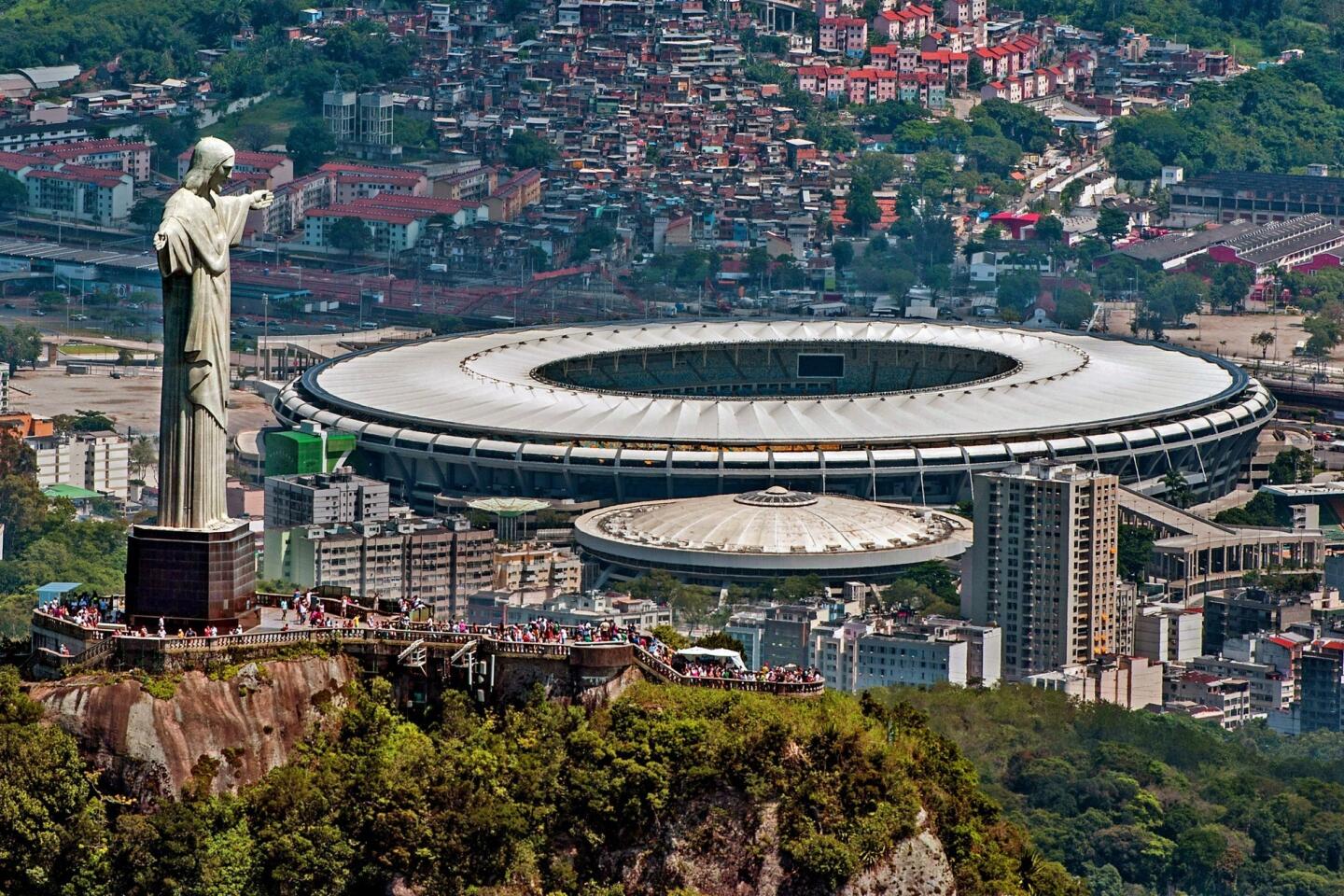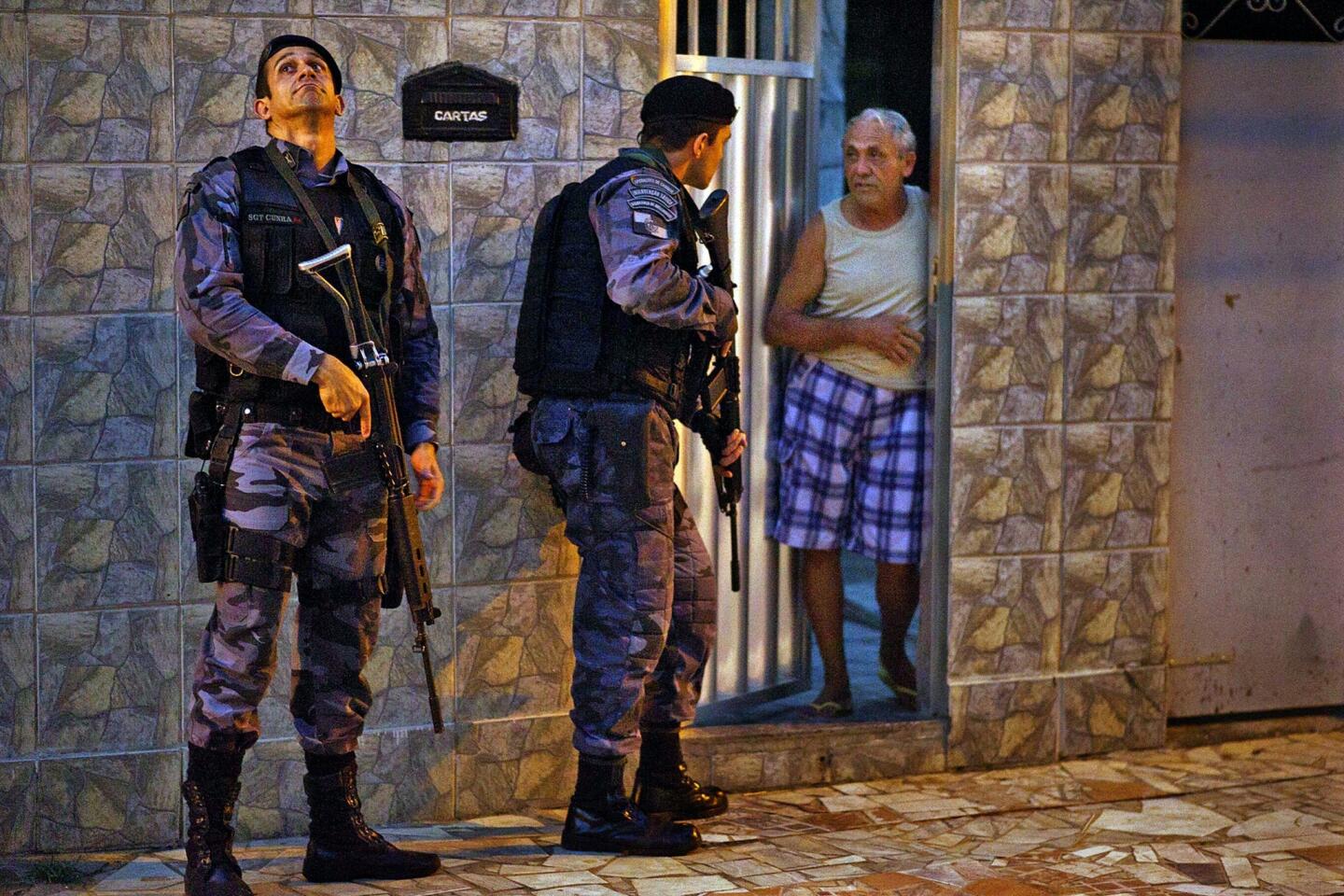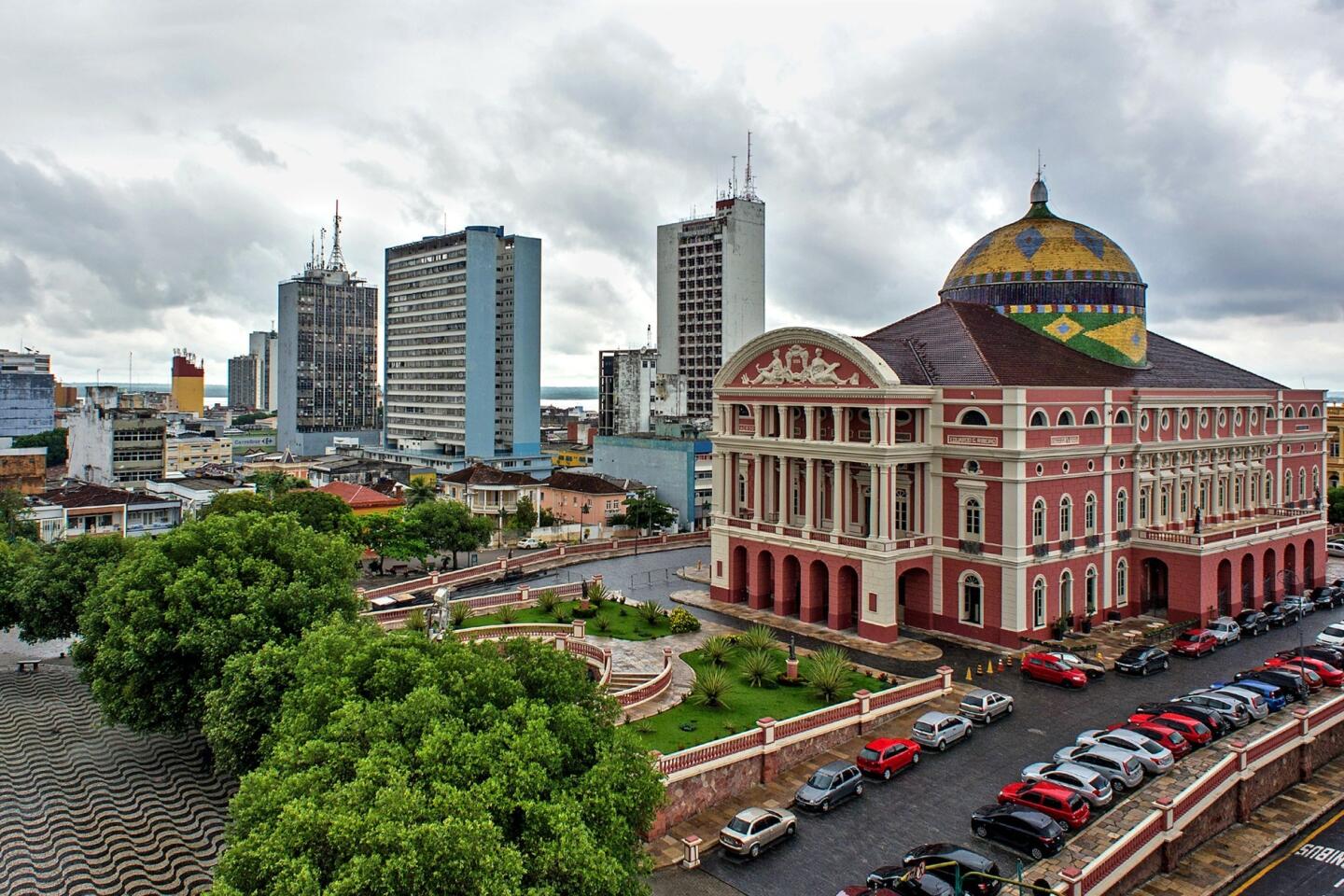Brazil: For World Cup fans, plenty of other action in Rio de Janeiro
RIO DE JANEIRO — As you roll into this urbane beach city you can easily understand why most soccer fans will choose to be based here, if possible, during the FIFA World Cup, the sport’s premiere international competition that begins June 12.
Brazil’s former capital and a resurgent cosmopolitan city, Rio has most of the urban offerings you would expect in a major destination, such as museums, restaurants and night life.
But it’s really the city’s natural beauty and bright blue skies that make the trip worthwhile and make visitors more likely to forgive the high prices, lackluster service and spontaneous logistical breakdowns. Many cariocas, as Rio residents are known, expect something to go wrong during the Cup. But they also expect to keep smiling and enjoy themselves.
After years of hope and worry, the country will greet an estimated 600,000 international visitors to the Cup’s 12 host cities, as well as the 3 million Brazilians who will travel their country to take in the games. They’ll watch 32 national teams compete to emerge as world champion on July 13 in Rio.
Because beauty, of both the landscape and the corporeal variety, is the focus in Rio, it’s not surprising that most of the World Cup fan activities will take place in the Zona Sul, or the Southern Zone, where sitting on the beach, sitting near the beach or playing soccer on the beach are the primary activities.
FIFA (Fédération Internationale de Football Assn.), the Cup’s organizer, will mount a massive TV screen on the sand in Copacabana in the Zona Sul. Crowds can gather and watch games at the Fan Fest (fifa.to/1h3fz30), but the street that runs along the city’s famous beaches is also packed with cafes and restaurants where fans can catch on TV all the matches taking place in the 11 other host cities (São Paulo, Fortaleza, Natal, Belo Horizonte, Salvador, Recife, Porto Alegre, Manaus, Cuiabá, Curitiba and Brasilia).
Four first-round matches, one second-round match, one quarter final and the final will take place at Rio’s famous and beloved Maracanã stadium, which reopened after a major renovation in 2013 to put on last year’s Confederations Cup, in which Brazil shockingly dusted Spain 3-0 in the final.
That was as police tear-gassed protesters blocks away. Some young Brazilians may use the World Cup as a rallying point around which to protest insufficient public investment in education, healthcare and public transportation. The kids have a point, but a tiny minority (and the police) are violent enough to make these clashes something to be avoided.
The area around the Maracanã is unremarkable, like much of Rio, so most visitors will want to stay in the Zona Sul and take trips to Santa Teresa, a hilly neighborhood that’s home to hipsters and starving artists, and to the historic downtown center of the city. In many beach cities, the tourist area is for rubes. But in Rio, the Zona Sul, with its beach neighborhoods of Copacabana, Arpoador, Ipanema and Leblon, is where most locals come to spend leisure time, usually on the beach.
Armed with little more than a bikini or sunga and some cash (in Rio, it’s best to leave flashy jewelry at home) visitors can strike out on any piece of sand and be attended to by men at small stands who will rent chairs and umbrellas as well as sell coconuts, water or caipirinhas, Brazil’s national cocktail, to enjoy along with the view.
Unlike other Brazilian cities, Rio is not famous for its culinary offerings. The crown jewel of Copacabana for local foodies is Adega Perola (138 Rua Siqueira Campos; 011-55-21-2255-9425), behind the Siqueira Campos metro station, offering the best of old-school Iberian cuisine. Residents knock back chopp (draft beer) and feast on a wide assortment of cold tapas-style dishes, mostly from the sea, especially polvo (octopus), the sweet haddock defumado or perola do mar (pearl of the sea, or mixed seafood). Some may stick around to kick back shots of good, aged cachaça (the stuff sold in the U.S. is considered horrible here. If you ask for uma boa cachaça anywhere, they’ll serve something complex and artisanally produced).
Santa Teresa, a source of lodging options because Zona Sul hotels will in all likelihood be sold out (AirbnB should be a valuable resource for late bookings all over Brazil), also has one of the city’s best restaurants, Aprazível (62 Rua Aprazivel, Santa Teresa; 011-55-21-2508-9174, aprazivel.com.br), beloved for its contemporary tropical cuisine from land and sea.
For those desperate to experience the all-the-meat-you-can-eat experience Brazil is somewhat famous for, well-heeled locals head to Porcão (218 Rua Barão da Torre, Ipanema; 011-55-21-3202-9150, porcao.com.br), but the churrascaria culture really belongs to gauchos in the south of the country.
Because this is Rio, both Porcão and Aprazível are expensive. For day-to-day meals, cariocas, as body-conscious as anyone in California, survive on juices, sandwiches and salads from the city’s ubiquitous juice bars. They all serve the same thing, offering up açaí in a bowl with granola and bananas for breakfast or suco de caju (cashew fruit juice) and a tuna sandwich for lunch. The quality can usually be deduced by how clean any particular one looks, but Bibi (bibisucos.com.br) is a reliable chain, with locations in and around the beach areas.
Despite major progress made in the last decade, Rio is still a deeply unequal city with social issues that are far from unresolved. For years the police have been fighting to win control of the favelas — the hundreds of neighborhoods originally built as spontaneous settlements for the poor and that later often became occupied by drug gangs — with mixed results. In many cases, favelas are simply neighborhoods now, and some are seeing rapid gentrification. In others, police are still fired upon by drug traffickers.
Curious visitors should feel safe heading by bus to the top of the Vidigal favela and the Alto Vidigal hotel and nightclub venue (2 Rua Armando de Almeida Lima, Vidigal; 011-55-21-3322-3034, www.altovidigal.com), where they’ll have a fantastic view and a night dancing with the city’s young and beautiful. Tours of favelas are available, though ones conducted in Jeeps are considered in extremely poor taste. For those inclined to embark on this type of sociological tourism, cariocas look much more kindly on walking tours, which treat the favelas as the communities they are rather than as safari destinations. Favela Tour (www.favelatour.com.br) has a history of pleasing visitors.
Then there’s the beauty of nature itself. The impressively grand mansion at Parque Lage (414 Rua Jardim Botânico, www.eavparquelage.rj.gov.br) serves drinks and food in the daytime at its art cafe, but the main attraction here sits behind it, between the colonial structure and the Christ the Redeemer statue at the top of the hill (visit that, too, if you have time. It’s a train to the top (www.corcovado.com.br), where you can explore dense jungle and waterfalls in the public Botanical Garden for as long as you like.
Much of Rio was built while the city was the capital of the Portuguese Empire, after the royal family fled Napoleon and set up shop here in 1808, and it’s easy to recall this majesty downtown, which feels more like a southern European capital than a developing country.
At Bar Amarelinho (55B Praça Floriana, Cinelândia; 011-55-21-2240-8434; www.amarelinhodacinelandia.com.br), workers can have a nice happy hour meal and beer while taking in the splendor of the Municipal Theater (www.theatromunicipal.rj.gov.br), which will be putting on a variety of cultural events during the World Cup.
Much of the city heads to the downtown Lapa neighborhood on weekend nights, whose Avenida Mem de Sá is packed with bars, many of which offer live samba. But Rio’s true bohemians, artists and colorful intellectuals congregate farther down, near the Bar da Cachaça (110 Av. Mem de Sá), a veritable hole in the wall serving up the strong stuff. One too many could leave you with a hangover. But don’t worry, the next morning the sun, sea and fresh air on the beach should, as with most other problems in Rio, resolve that for you quickly.
More to Read
Sign up for The Wild
We’ll help you find the best places to hike, bike and run, as well as the perfect silent spots for meditation and yoga.
You may occasionally receive promotional content from the Los Angeles Times.




















